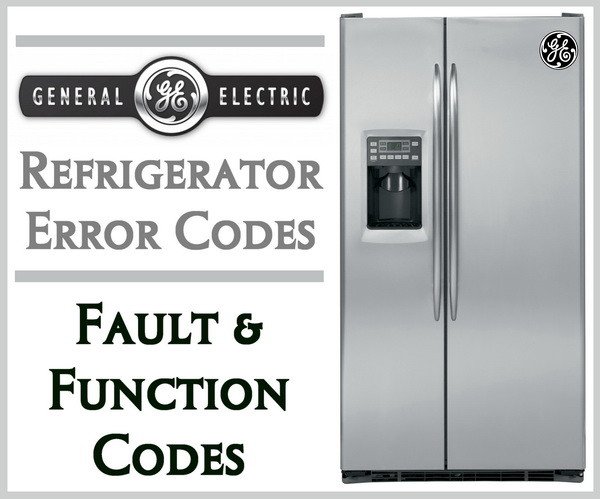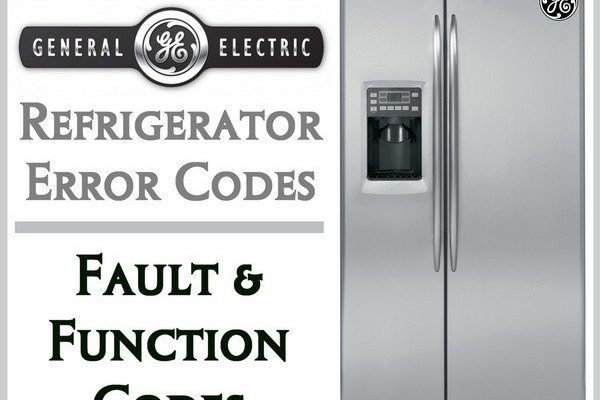
Now, you might be wondering why defrosting is such a big deal. Think of your refrigerator as a mini winter wonderland. It keeps things frosty to preserve your food. But like any good winter, it needs a bit of sunshine now and then—hence, the defrost cycle. When the defrosting mechanism acts up, it’s like the sun not rising after a chilly night. And that’s when the E3 code pops up, waving a little red flag that says, “Hey, I need some attention!” So, let’s dive into how you can prevent this from happening in the future, ensuring your fridge keeps running smoothly.
Understanding the Defrost System in Your Refrigerator
To really get to the bottom of preventing that pesky E3 error, you need to understand the defrost system of your GE refrigerator. At its core, this system is responsible for melting any ice buildup on the evaporator coils. Imagine a snowman sitting too long in the sun; you want just enough melt to keep things fresh, not soggy. The system typically consists of a defrost timer, a heater, and a thermostat, each playing crucial roles.
The defrost timer acts like a conductor in an orchestra, ensuring the entire defrost cycle happens at the right time. Imagine it as the clock that prompts your fridge to take a break and melt away unnecessary ice. This clockwork precision is vital for your fridge’s health. Meanwhile, the defrost heater is the unsung hero, providing the warmth needed to melt the ice away. It’s like a gentle heatwave during winter, ensuring the chill is just right. Finally, the defrost thermostat monitors everything, making sure temperatures stay in the optimal range to prevent excess ice.
Now, if any of these parts falter, your fridge’s defrosting routine can become disarrayed, triggering that dreaded E3 code. Take heart, though, as understanding this system is your first step toward prevention. Ensure regular maintenance checks are carried out so that these components work harmoniously. Recognizing the importance of each part can save you from the icy grip of an unexpected error in the future.
Common Causes of Error Code E3
To thwart the appearance of the E3 error code, let’s break down some common causes. First on the list is a malfunctioning defrost timer. If this timer hiccups, it might not signal the heater to start, leaving the evaporator coils frozen over. It’s similar to a broken alarm clock that fails to wake you up on time. Without the cycle starting when it should, frost begins to accumulate, eventually affecting your fridge’s cooling performance.
Next, there’s the possibility of a defunct defrost heater. A faulty heater cannot melt the ice, similar to a broken radiating heater in a room—you’ll feel the chill and see the frost accumulating. Without this essential function, your refrigerator turns from a cool keeper of foods to an unplanned winter storage. Simply put, you need to check that this component is working efficiently to avoid issues.
Lastly, consider the defrost thermostat. If it can’t measure temperature changes accurately, the heater won’t know when to operate, leading to an unsuccessful defrost cycle. This is akin to a malfunctioning thermostat in your home that keeps it too cold or too warm because it can’t sense the actual temperature. A quick inspection and replacement of parts when needed can prevent false readings and future mishaps.
Steps to Prevent Future E3 Errors
Now, let’s talk prevention. The goal is to keep that E3 error far from your fridge’s digital display. **Regular maintenance** is your best friend here. Think of it like a routine check-up with your doctor—regular assessments can catch potential issues before they snowball. Set a reminder to inspect your refrigerator’s defrost system every few months. Ensure the timer, heater, and thermostat are in working order.
Another key step is to be mindful of your refrigerator’s environment. You wouldn’t want to place it in a space that’s too cold or too warm as it can strain the defrosting system. Ensure your fridge has enough space for air to circulate, allowing it to breathe and function optimally. It’s like not overcrowding a tiny room—space makes all the difference.
If you notice any minor issues, don’t ignore them. Addressing small quirks—like unusual noises or overheating—early on can prevent them from morphing into full-blown problems. Consider calling a professional technician if you’re unsure about performing these checks yourself. They’re like the expert you call to solve a puzzle when you’re stuck—sometimes a fresh pair of eyes can spot what we can’t.
Final Thoughts
Dealing with the GE refrigerator error code E3 can seem daunting at first, but with this knowledge in hand, you’re well-equipped to prevent it from reappearing. Remember, it’s all about proactive maintenance and creating an environment for your fridge to thrive. By regularly inspecting your defrost system and ensuring it operates smoothly, you’re safeguarding your appliance’s future and your peace of mind.
In essence, keep the orchestra of your refrigerator’s defrost system playing in harmony. After all, a well-maintained fridge is like a well-maintained car; it’ll keep you content and worry-free for years to come. So, next time you reach for that ice-cold drink, you can do so with the confidence that your fridge is working just as it should, quietly behind the scenes.
